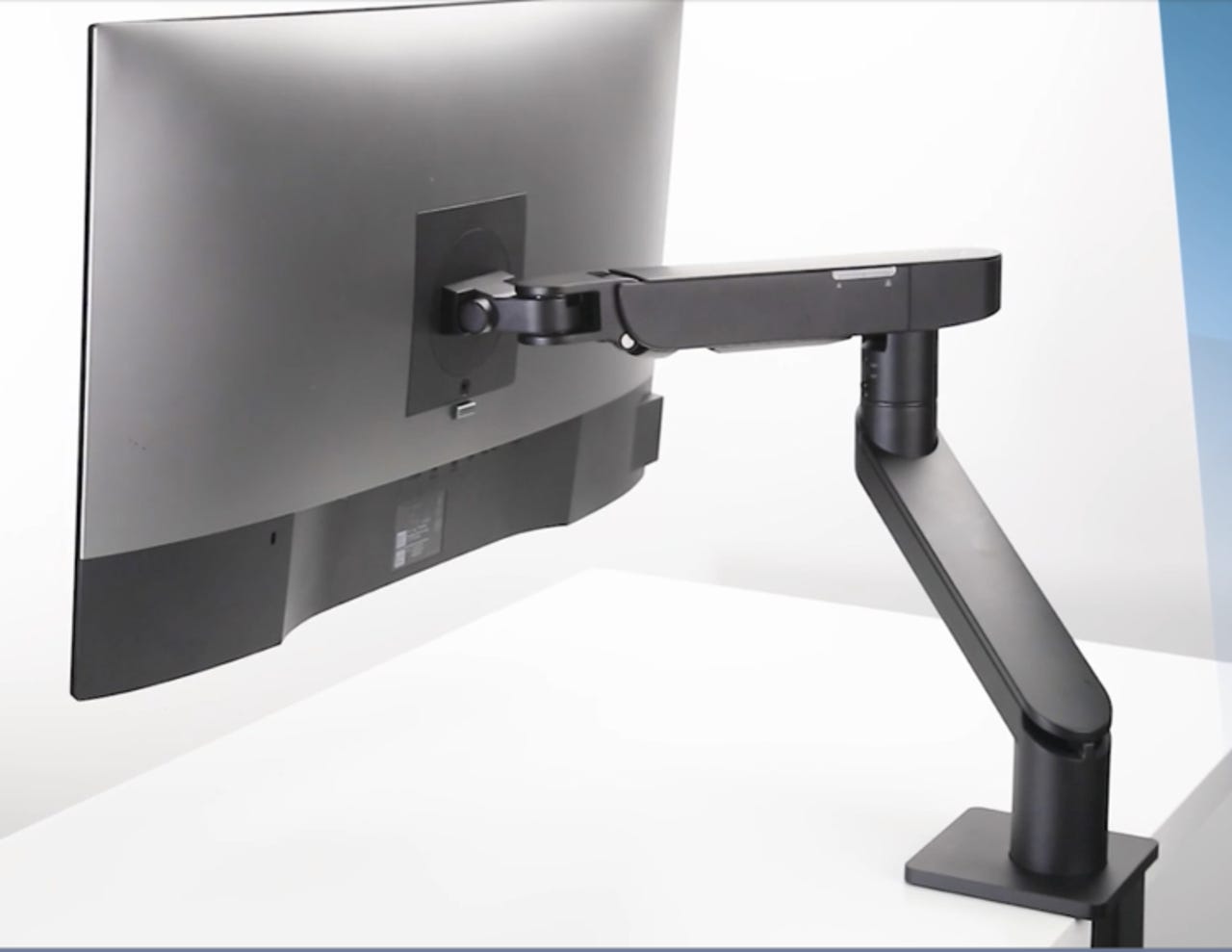
ZDNET Multiplexer
mul-ti-plexer-er. noun. A device, in electronics, that synthesizes disparate data signals into a single, uniform output. ZDNET Multiplexer merges various perspectives, media types, and data sources and synthesizes them into one clear message, via a sponsored blog.
ZDNET Multiplexer allows marketers to connect directly with the ZDNET community by enabling them to blog on the ZDNET publishing platform. Content on ZDNET Multiplexer blogs is produced in association with the sponsor and is not part of ZDNET's editorial content.
Better living through monitor arms
"If anyone can talk about the merits of monitor arms, it's you." That was my wife, speaking to me after I told her the topic of this article. She added, "You are the king of monitor arms." That's because I have used a lot of monitor arms. I find them incredibly useful and helpful.

Here's why.
First, let's spend a few minutes defining the term. You can see an example in the photo. This is the Dell Single Monitor Arm (model MSA20).
(Since the general guidelines in this article apply to almost all related purchases, I'm happy to use Dell gear to illustrate my recommendations.)
A monitor arm replaces the stand that comes with your monitor. One side of the arm attaches to the back of your display.
The attachment point uses a grid of screws that are arranged in a VESA (for Video Electronics Standards Association) standard configuration. When you buy a monitor, it's a good practice to make sure it has a VESA-compatible mount on the back.
The other end of the monitor arm usually just clamps onto a desk. Sometimes, there's an option for the arm to attach through the wire routing hole that comes in some desks. Other times, the monitor arm is attached to a free-wheeling stand. Having all these options is one of the big benefits of monitor arms.
Between the two mounting points are a series of articulated joints. These allow the monitor to swivel, tilt, and raise up and down -- letting you position your screen exactly where you want it.
Monitor arms cost between about $50 and $500, depending on how well-designed they are and how much weight you want them to hold. I generally spend about $200, because I often want them to hold a fair amount of weight.
Key to their design is the ability to balance the monitor, so you can move it without much effort even though it's heavy. Most monitor arms accomplish this with a series of tension adjustments in each extension point.
Benefits of monitor arms
But enough of the physics of monitor arms. Let's talk about the benefits.
Reclaim desk space: One of the biggest benefits is the ability to reclaim desk space. The monitor arm mounts at the back of your desk, freeing up nearly your entire desk surface for your keyboard, mouse, snacks, coffee cups, and so on. On my main desk, I not only have a keyboard and mouse, but I have a series of video editing controllers that require real estate. There's room for all of these accessories thanks to the monitor arm.
Ergonomics: Another big benefit is ergonomics. You can sit back properly in your chair and adjust the arm so it's comfortable for you to read the monitor. This way, you don't have to hunch all day to read the screen. Both your back and your eyes will thank you.
Rotation: One of the interesting benefits of monitor arms is the ability to rotate the screen (assuming your video driver supports it). This is particularly helpful for secondary monitors, especially if you're editing a full-portrait photo or tracking a long Twitter or Slack conversation. Properly set up, you can switch your monitor from landscape to portrait and back again with ease.
Space where there isn't space: My desk has room for two monitors, but I hang four monitors off of my desk using monitor arms. I have monitor arms mounted at the far left and far right corners of the desk, and the actual monitors hang in space beyond the bounds of my desk. It feels a bit geeky, but as we discussed a few weeks ago, there is truth to the idea that more screen real estate translates into greater productivity.
Switching configurations: You can also use a monitor arm to switch desktop configurations quickly. As I showed in my desk studio tour, I have a teleprompter on a side desk. When using the prompter, I don't want my monitor in the way. But when working on a script or editing, I can slide the monitor right back in front for comfortable use. The monitor arm gives you the flexibility to move a large display anywhere within its bounds.
Solving unique environmental or situational challenges: This is a true story. When my little puppy was a baby, he used to cry mightily if Mommy or Daddy wasn't with him on the couch. So I mounted a monitor arm to my couch side table, hooked it up to a laptop, and proceeded to work with the little guy on my lap. It was an out-of-the-box solution that enabled me to spend real quality time with my dog while also getting my job done.
When you look at monitor arms, keep in mind that they're not just mechanical devices. They're force multipliers that allow you to take something that's normally fixed and make it into a variable, changeable option.
Also, don't limit yourself to one arm on your desk. Dell makes a dual-arm set, and I've gone up to having seven arms on my desk at once! If my experience is any indication, monitor arms will increase your flexibility and productivity, too.